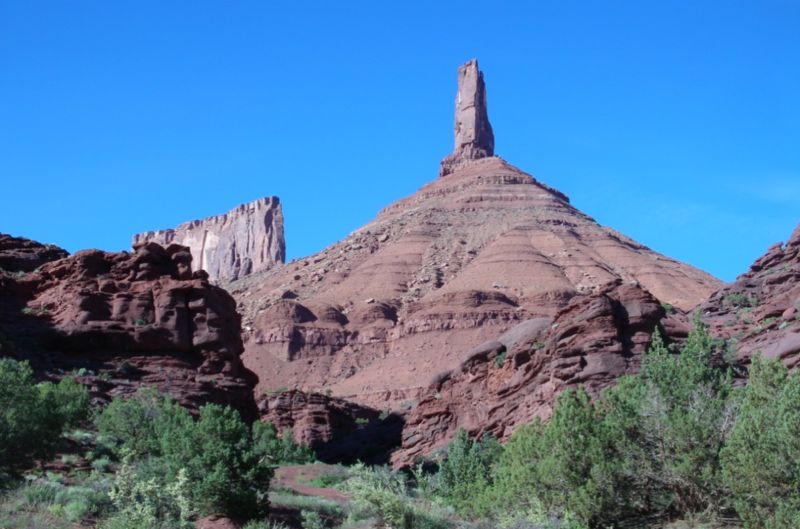Popular Utah rock-climbing spot vibrates in time with earth, wind, and waves

Enlarge / Castleton Tower in Utah's Moab National Park is a top rock-climbing destination. (credit: Public domain)
Scientists at the University of Utah have made the first detailed seismic measurements of a pillar-shaped sandstone formation in Utah known as Castleton Tower. [corrected] The structure vibrates at two key resonant frequencies, according to a new paper in the Bulletin of the Seismological Society of America. That means it's likely to withstand earthquakes of low to moderate magnitudes. The methodology the Utah team developed can also be applied to other natural rock structures to determine how vulnerable they are to seismic and other similar activity.
"We often view such grand and prominent landforms as permanent features of our landscape, when in reality, they are continuously moving and evolving," said co-author Riley Finnegan, a graduate student at the University of Utah. "Because nothing is truly static, there is always energy propagating throughout the earth, which serves as a constant vibration source for the rock."
The research team has an entire webpage devoted to its seismic recordings of the natural resonances (vibrations) that come out of the Utah arches. The arches are the impressive red rock formations, about 10 miles from the town of Moab, and the team has sped up the recordings into audible sound. Those structures can bend, sway, and shake in response to any number of factors: wind gusts, distant seismic tremors, thermal stresses, local traffic, and so forth. The arches often amplify the energy passing through them if the frequencies are just right. Understanding those dynamics is crucial to being able to predict how the structures will respond in the event of an earthquake or similar disruption. Yet there haven't been many ongoing efforts to do so over the years, despite a great deal of research on manmade civil structures.
Read 7 remaining paragraphs | Comments